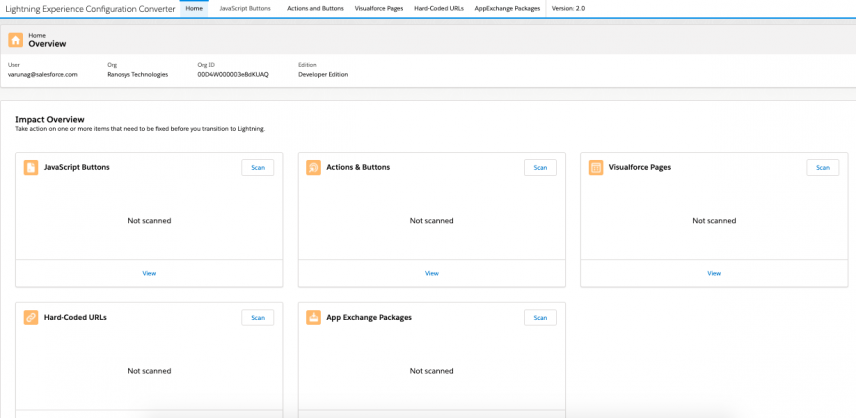“LEX transition looks like a roller coaster ride at the start, but once done, you will have fun and enjoyment at your plate”- Are you up for the game?
Salesforce customers still on the Classic version are missing a plethora of features that are offered by Salesforce Lightning. This article talks about why and how one should smoothly migrate to Salesforce Lightning experience and boost user adoption.
Salesforce Lightning migration doesn’t mean that Classic cannot be accessed; users can easily switch back to it with a simple click.
Why migrate to Salesforce LEX?
Wondering what makes Salesforce LEX better than the Salesforce Classic version? Let’s evaluate the ultimate benefits of Salesforce Lightning experience.
Lightning Transition Benefits:
Lightning platform allows fast and easy app development with its ready-to-install Appexchange ecosystem. In addition, as per a Salesforce survey, the customers who switched to Lightning noticed productivity improvements; however, it varies for every customer:
- Increase in sale’s team productivity by 41%
- Increase in collaboration by 40%
- Increase in win rates by 21%
- Increase in conversion rate by 22%
Salesforce’s roadmap:
As we are aware that Salesforce provides releases 3 times a year and this time, it’s focus and all the innovation is on Lightning features only. However, there may be a time when Salesforce completely turns off the Classic and we don’t want the sudden change for our customers and then transition can become complex. Appexchange products are also updating and focusing on releases which are compatible with Lightning. There are many features which are available out of the box (standard) in Lightning and we might have them customized for Classic. The sooner you migrate to Lightning the better will be the user experience.
Lightning App Builder:
Using the Lightning builder, pages for Lightning experience and the Salesforce Mobile App can be created with clicks instead of code. Developers can drag and drop the Lightning components to build desktop and mobile apps. It also enables the users to sync Gmail and Outlook calendars with Salesforce actions.
Improved Analytics:
Creating reports and dashboards in Lightning is much easier, intuitive and provides a great experience to the top executives and the users of the organization. The report run page is easy to read and filter, Animated and interactive charts bring data to life. Einstein Analytics also comes with many new features like Widget editing right on the dashboard, so if you are still on Classic, you are losing on a lot of features provided by Salesforce.
Salesforce Mobile:
Salesforce mobile app is built on top of the Lightning platform. Any development on the desktop application is rendered on the mobile app.
Salesforce LEX: Key Lightning Features
Here’s an overview of the core Salesforce Lightning features.
Path and Kanban View: Sales Path provides a visual and guides the sales reps working on an opportunity and helps close it while updating the various stages based on the calls and progress. Using Salesforce Lightning, reps can take action on the opportunities more quickly and accurately. Sales representatives can manage the opportunities in Kanban view where they can drag and move between different stages of opportunities depending on the progress with the prospect. As soon as the opportunities are dragged, they move in the pipeline and calculations are done automatically.
Activity Timeline: Open tasks, plan meetings, quickly log calls, create tasks, and send emails efficiently.
Experience Cloud: Customers and Partners can collaborate and offer an awesome experience to their customers. Lightning communities provide a good user experience and branding, themes for the portal can be incorporated per the requirements.
The Assistant: An awesome feature to guide you and provide insights which are the top priority and progressing deals, hence increasing the conversion rate.
Homepage: A new and intelligent homepage and standard components like news widget, recent records, top deals and these components can be moved around based on the requirements.
Search: Find the right records faster and act on search results by enabling AI-powered Einstein Search.
Search results include instant results, top results, and recent records.
Salesforce Flows: Automating the process by point and click and guiding the users through multi-step processes without code, this is the real power of automation by clicks.
Email: Send email through Office 365 or gmail accounts with Salesforce email. Using this, customers can quickly log calls, create tasks and send emails without handling too many systems.
Here is the complete list of Key Lightning Features that makes it so special.
Here is the detailed Comparison of Lightning Experience and Salesforce Classic.
How to migrate to Salesforce LEX
For Salesforce Lightning migration, we have to be sure of including the stakeholders i.e. Executive Sponsor, Sales Manager, Admin and Salesforce Champion as it affects everyone and needs to work as one team.
Salesforce Lightning migration is a 3-phased approach:
- Discover Phase
- Learn about Salesforce Lightning- What’s better in Lightning, how does the experience looks like
- Evaluate Lightning Experience (LEX) benefits and Readiness- check Lightning readiness and consult with experts
- Plan your rollout- Create a rollout and change management strategy
- Align with executives and stakeholders- get approvals
- Rollout Phase
- Prepare users for Lightning Experience- kick off change management activities
- Implement Lightning Experience features- setup path, Kanban view and exclusive Lightning features
- Adjust existing customizations- Learn about the transition tools like experience configurator, convert attachments, documents and notes, move classic knowledge base to Lightning Knowledge
- Launch Lightning Experience- make it default interface
- Optimize Phase
- Measure success metrics- track Lightning experience adoption via app
- Motivate users to work with Lightning Experience- learn why users will want to switch to Classic, provide users the contextual guidance
- Iterate on the rollout plan- run Salesforce Optimizer to check on the improvements that can be done
- Turn Off Salesforce classic in the org
Below are the reports and approach that needs to be accessed for LEX transition:
Lightning Readiness Report:
From the Salesforce instance (production org) , one can generate the Readiness report specific to it that provides the direction, what considerations need to be taken while migrating to Lightning.
Please note that the report will give recommendations and a high level view of what needs to be fixed when migrating to Lightning i.e. it sets you a path and gives an indication of what needs to be done. A complete picture will be attained by doing the analysis of the org by an Implementation partner or the Salesforce experts.
Lightning Experience Configuration Converter:
This is an awesome tool provided by Salesforce and wants all their partners and customers to get the maximum benefit from Lightning experience. This tool helps to make the transition as smooth and as declarative as possible.
Below is the snapshot of the tool which you get once you enter Salesforce credentials and this will give you the list of different components that can be scanned and the conversions which can be done declaratively by click of a button while some of the changes needs to be done manually.








